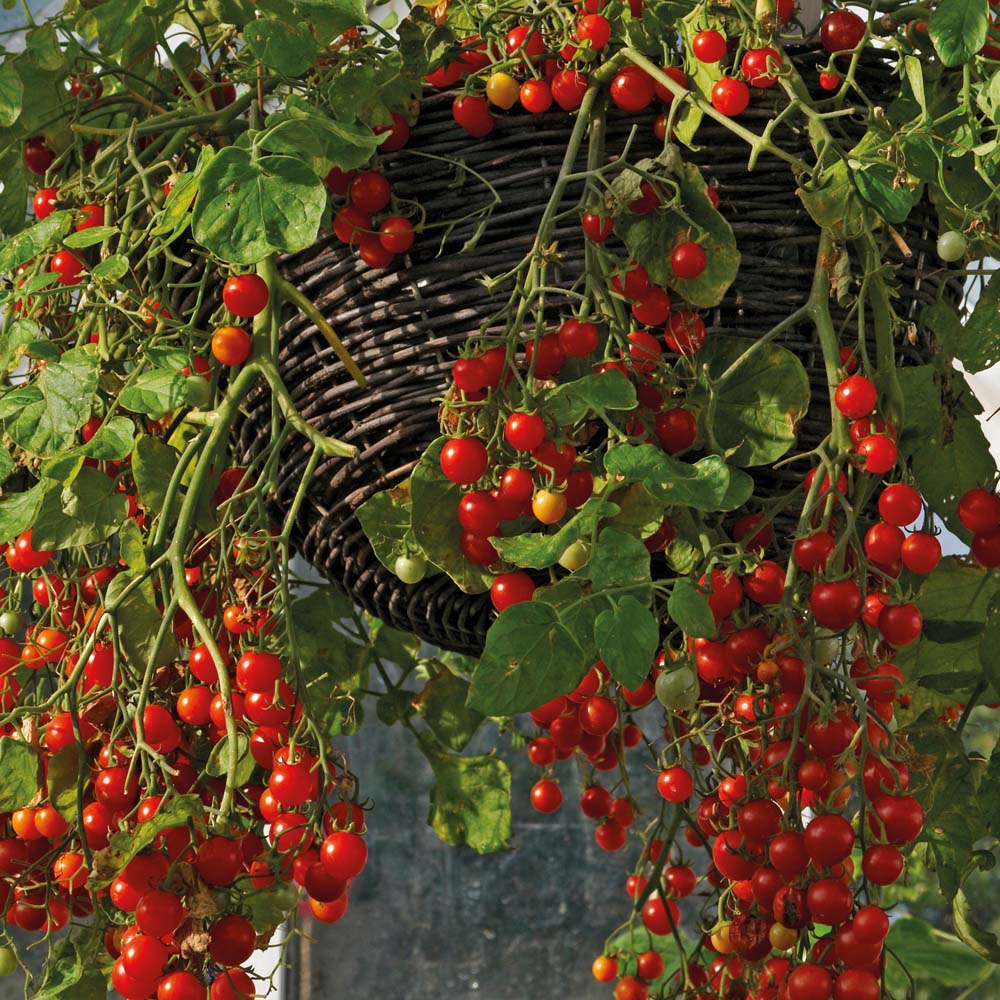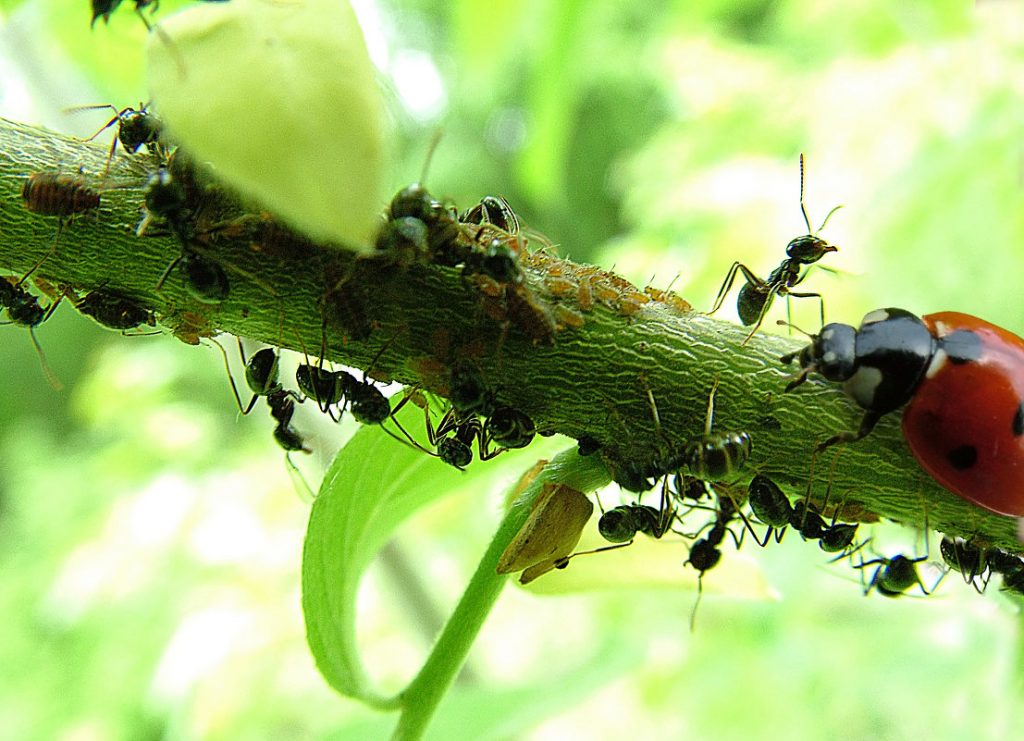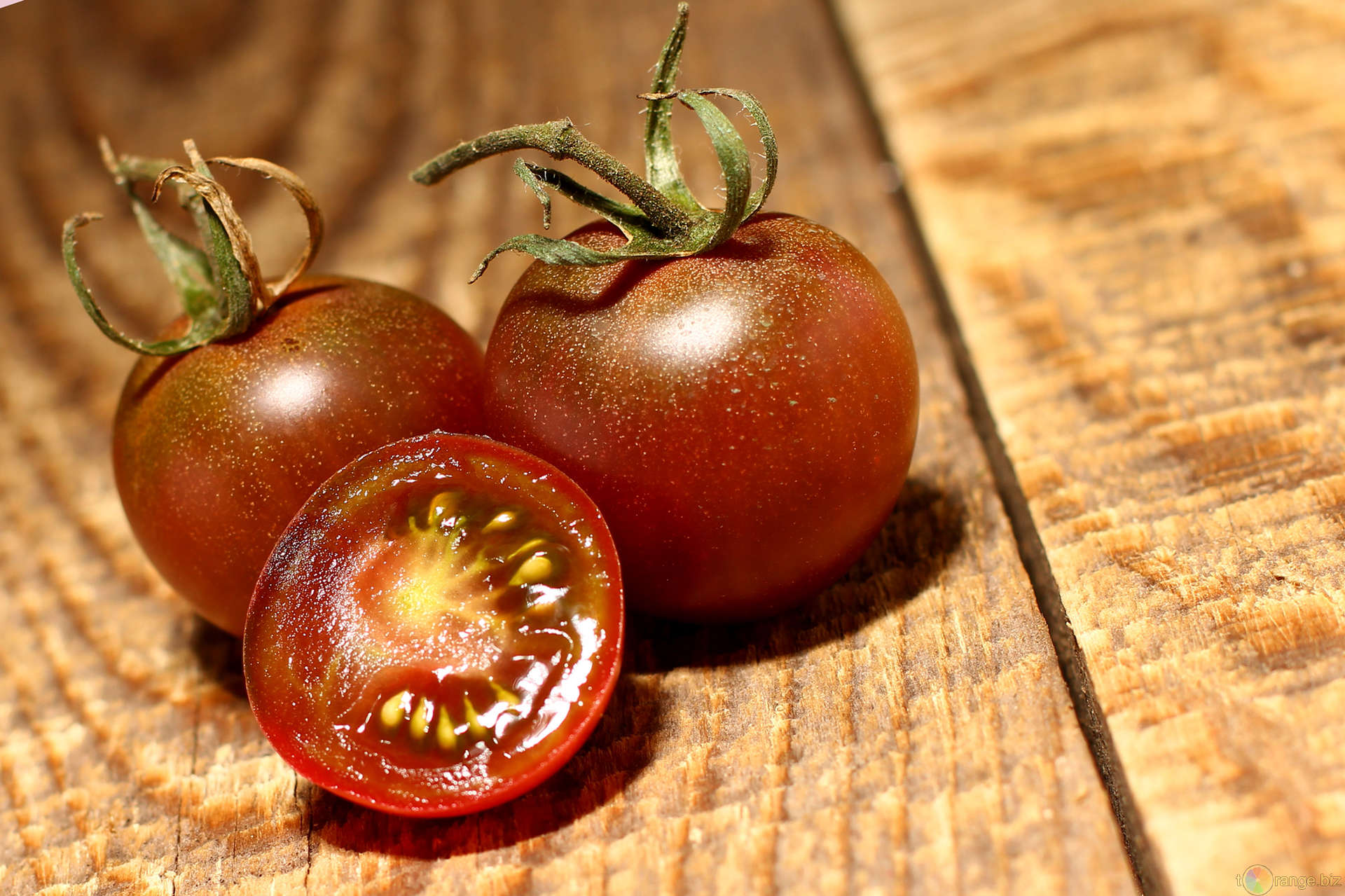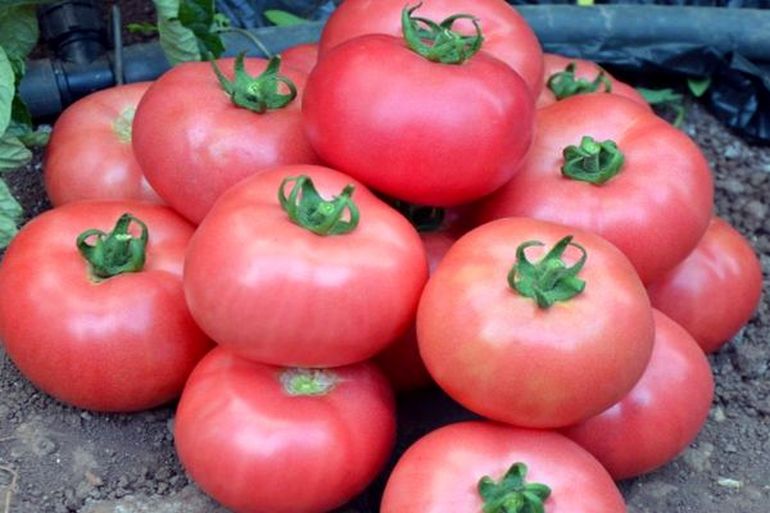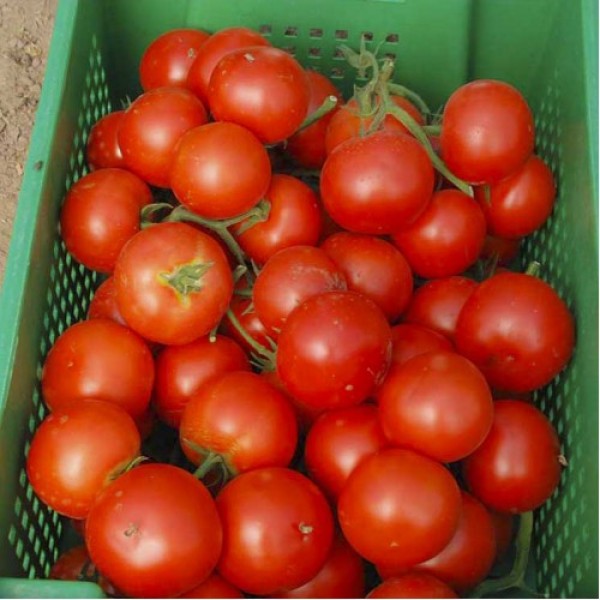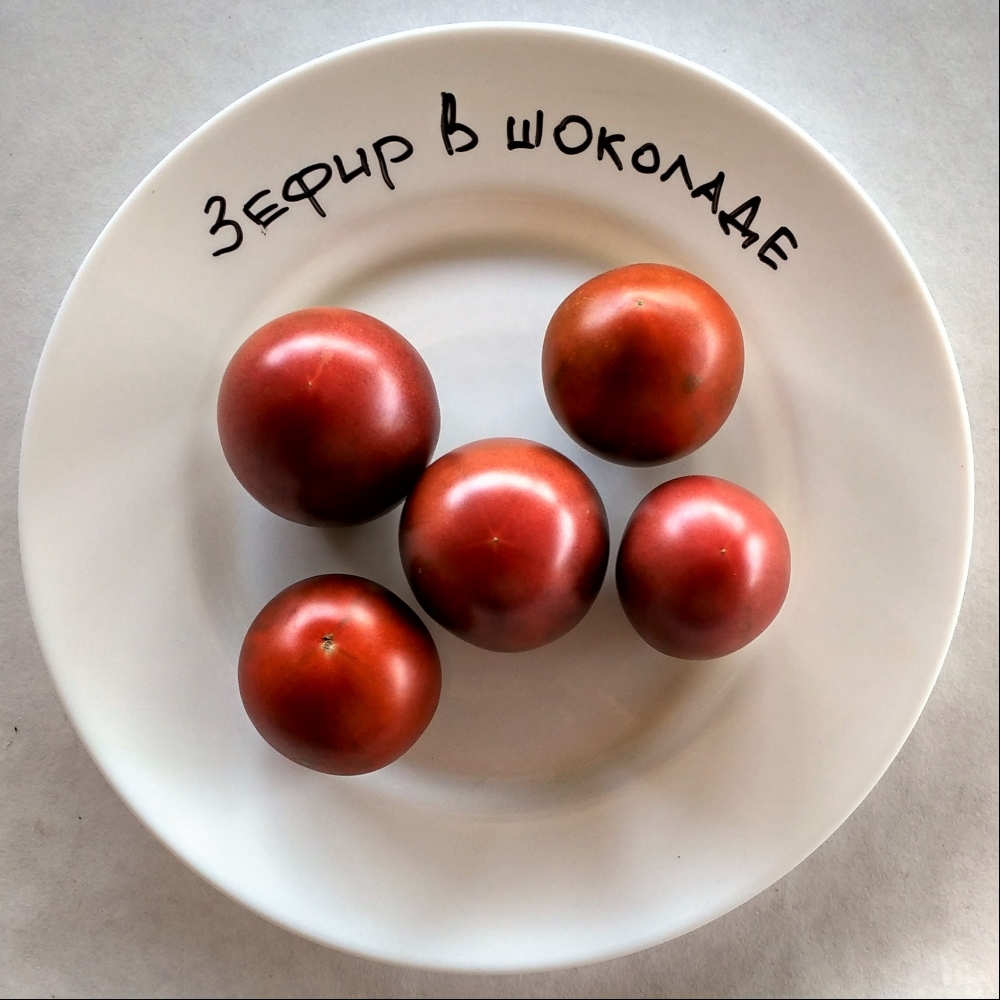Content:
The ladybug tomato is a low-growing bush with miniature fruits that can decorate any garden with its decorative look. On one branch of a tomato, fruits of green, red and light brown flowers hang. This variety of tomatoes has earned the love of gardeners not only for their appearance, but also for their early maturity, yield and transportability.
History of creation
The early ripening tomato variety Ladybug was included in the State Register as a vegetable crop in 2008. Its originator is Agrofirma AELITA LLC. The crop is suitable for growing both in greenhouses (heated and unheated) and in the open field.
The variety Ladybug is recommended for cultivation in summer cottages and personal subsidiary plots.
Tomatoes are widely used in cooking. Small tomatoes will decorate any dish. Children love this variety for its sweet taste and beautiful shape. It is ideal for canning. It is convenient to place small fruits in the bank, there is practically no free space in it. During heat treatment, the ladybug does not crack, and the pulp retains its consistency. The ladybug is also used to make tomato juice and ketchup.
Characteristics and features of the variety
Ladybug tomatoes have the following parameters and characteristics:
- The bush is undersized, its height is about 50 cm. The plant develops according to the determinant type, that is, it stops growing after 2-3 brushes appear on the stem;
- Leaves are small, light green;
- Inflorescence - intermediate type;
- The first ovaries are formed after the appearance of 6-7 leaves;
- Tomatoes are self-pollinated and therefore do not need any other pollinators;
- Fruit weight - only 20 grams;
- The skin is dense, so the tomato tolerates storage and transportation well;
- Fruit shape - spherical, color - bright red;
- The pulp of a tomato is juicy, tastes sweet and sour;
- The variety is early ripening, from planting to harvesting the first harvest in only 80 days;
- The variety is distinguished by friendly flowering;
- Productivity is high, up to 9 kg per 1 sq. m;
- This variety is distinguished by abundant fruiting;
- The fruiting period is long, from July to September;
- The culture bears fruit well in unheated greenhouses; when it gets cold, it is recommended to cover the plant with any non-woven material or film;
- The early ripeness of tomatoes allows you to escape from phytophthora, since this disease develops mainly in August.
The main feature of the Ladybug variety is that it has a small fruit, like cherry tomatoes.
Agricultural technology of cultivation
According to the description of the variety, it can be understood that the Ladybug tomato is unpretentious in cultivation. However, without competent agricultural technology, it is impossible to achieve high results in terms of yield.
Loamy and sandy soil is most suitable for growing tomatoes. For good fruiting and high disease resistance, the soil for growing tomatoes must be enriched with nutrients (organic and mineral fertilizers). Sources of organic matter are rotted manure, chicken manure, compost and humus. Mineral dressing - ammonium nitrate and superphosphate. Experienced gardeners add wood ash to the soil. It will enrich the soil with potassium and protect against many insect pests.
Tomatoes are grown in seedlings. Seeds are planted for seedlings at the end of February - March. It is best to use wooden boxes as containers for planting seeds. Before filling them with earth, you need to disinfect the containers. After this procedure, you can pour drainage (expanded clay) on the bottom of the container, and then fill in moist nutrient soil. Now you can sow the planting material to a depth of 2 cm.
Before sowing seeds, it is recommended to process them in a solution of potassium permanganate (2.5 grams per 1 tbsp. Water), then rinse with clean water and dry slightly.
To accelerate seed germination, biostimulating solutions are used.
After the appearance of the first two leaves, you need to pick young plants. It is better to plant them in separate peat pots or in special boxes with recesses for plants.
This culture does not like cold weather, so it is important to monitor the temperature in the room, the permissible temperature limit is 18 ° C.
Young plants require a lot of light, at least 12 hours a day.
Seedlings should be fed with full fertilizer 2 or 3 times and ventilated. A week before disembarkation, it must be hardened. Seasoned seedlings yield significantly higher yields.
Vegetable growers recommend treating them with copper oxychloride before planting seedlings. This will help protect young plants from fungal diseases. It is better to plant seedlings in the beds in the afternoon, when the sun is less active.
Seedlings can be planted in a heated greenhouse in April, and in an unheated one in May. In open ground, plants are also planted in May. The recommended distance between plantings is 70 cm.
Tomatoes are thermophilic and do not like when groundwater lies close, so a well-lit, hilly area is the best place for planting. The first harvest will appear in July.
If there is a desire to grow tomatoes, but there is no vegetable garden, then the Ladybug tomato variety is suitable for growing in an apartment on a balcony.
Although this variety is unpretentious, it still needs care, it requires:
- Water regularly. The culture should be irrigated with warm water. The soil should not dry out. You can apply drip irrigation;
- Tie up. The branches are simply strewn with fruits, under their weight the bushes lie on the garden bed. Pegs and linear lattices are used for the garter;
- Pinch. The bushes are spreading and require pinching, leaves and stepsons will have to be cut off every 10 days. This procedure helps to avoid shading, which increases the risk of disease and leads to slower fruit ripening. It is recommended to remove stepchildren in the morning so that the wounds dry out faster;
- Remove weeds. So that they do not take all the nutrients from the soil, thereby depriving the cultivated plant;
- Feed in a timely manner. A single application of nitrogen fertilization will help to increase the yield;
- Mulch. You can mulch the soil with straw or rotten sawdust. The procedure is necessary to reduce the risk of tomato diseases and protect the fruit from rot in bad weather conditions.Since the branches are heavy and stick to the ground and with excessive moisture, the tomatoes may rot.
The Ladybug Tomatoes were a favorite of the pests. Garden snails and ants are of particular concern to summer residents. Snails are capable of destroying the entire crop in a short time. And ants are accomplices of aphids that eat inflorescences. Aphids and ants are usually fought against with the help of agrochemistry (Aktofit, Profi).
Snails really do not like crushed eggshells, they should be scattered on the beds.
Advantages and disadvantages of the variety
Varietal tomato Ladybug has the following advantages:
- Early maturity;
- Productivity;
- Unpretentiousness;
- Disease resistance;
- Heat resistance;
- Excellent taste;
- Excellent commercial characteristics: beautiful appearance and smooth skin;
- Transportability;
- Universal use in cooking;
- Keeping quality - tomatoes can be stored for up to three weeks without losing their presentation;
- Tomatoes bear fruit well even in unheated greenhouses.
Gardeners are very happy that unripe fruits can be left in a dark place for ripening, for example, in the pantry, and then used for making canned food and salads.
The disadvantages include:
- Non-simultaneous ripening of fruits on the hand;
- Thick skin of tomatoes;
- Spreading of the bushes - in this regard, the vegetable takes up a lot of space in the garden.
Many summer residents liked bright red tomatoes with excellent taste and simple agricultural technology. Due to its varietal properties, Ladybug is a very popular variety of tomatoes. Therefore, gardeners from year to year plant this unpretentious tomato variety on their site.
